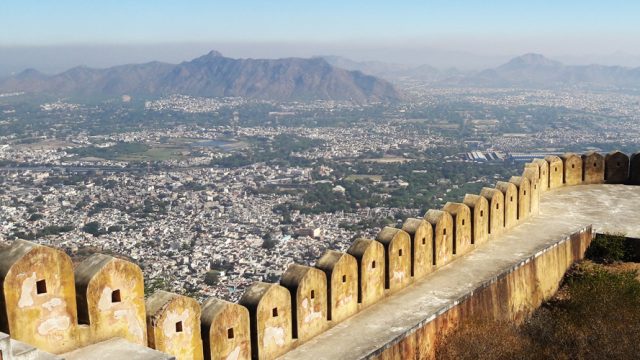This was my maiden trip to Rajasthan—a land that I, for no specific reason, delayed visiting. On my very first visit, Pushkar happened. No, not the camel fair (that’s for another day), this was The Sacred Pushkar—a festival of music, art, tradition and culture. By the serene Pushkar Lake, many folk performers, national and international, came together and gave me a musical experience that I’ll be talking about till the next one happens (this December). Apart from the festival, something else caught my attention—the little things that made Pushkar as we know. I wondered why would anyone want to visit this little town when no one is serenading by the lakeside or checking out camels. Of course the religious aspect is there and everyone wants to visit the most prominent of the very few remaining Brahma temples in India—Jagatpita Brahma Mandir, or the temples dedicated to his consorts—Savitri and Gayatri. My Pushkar experience came with a story of curse. As the legend goes, there was a sacrificial ritual (yagna) where Brahma was to marry the river goddess Savitri, which didn’t happen because Savitri took time to get ready! Instead, what happened was that Brahma had to find another consort and marry before the astrologically auspicious moment passed by. This is when Gayatri, a local shepherdess from the Gujar community, was brought to sit for the yagna as Brahma’s wife. This angered Savitri who then cursed Brahma that henceforth he will be worshipped only in Pushkar, after which she moved to the top of Ratnagiri, the highest hill in Pushkar, overlooking the lake. Gayatri settled for the lower hill at the eastern side of the lake. I wanted to see what Savitri saw from her seat of anger and annoyance—a sweeping view of Pushkar, and what a view!
Also, on the way to Pushkar (from Jaipur), one must visit Taragarh Fort. The drive up to the fort is winding and local ‘guides’ will try to sell their services (but you can also visit on your own), the view from there is spectacular. You can see whole of Ajmer in front of you with sounds of adhan from the neighbouring mosque as a background music.




